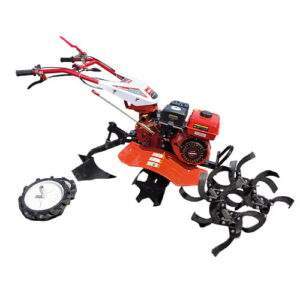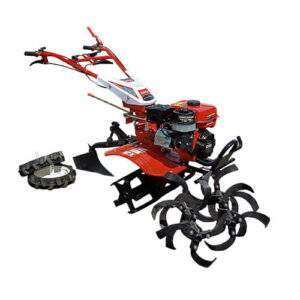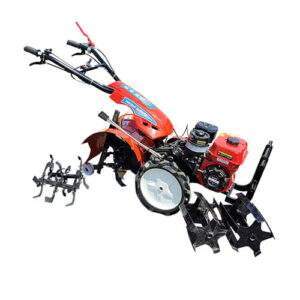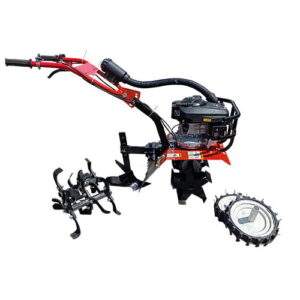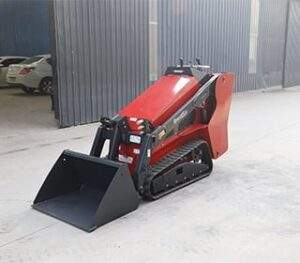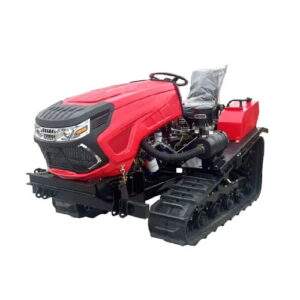The Ultimate Guide to Choosing the Right Walking Tractor for Your Farm
Introduction
Walking tractors, also known as two-wheel tractors or hand tractors, are versatile agricultural machines that have become indispensable tools for small to medium-sized farms worldwide. They provide an affordable and efficient solution for various farming tasks, from plowing and tilling to planting and harvesting. In this comprehensive guide, we will explore everything you need to know about walking tractors, including their types, key features, and how to choose the right one for your farm. By the end of this guide, you will have a clear understanding of how to make an informed decision when purchasing a walking tractor.
Key Features of Walking Tractors
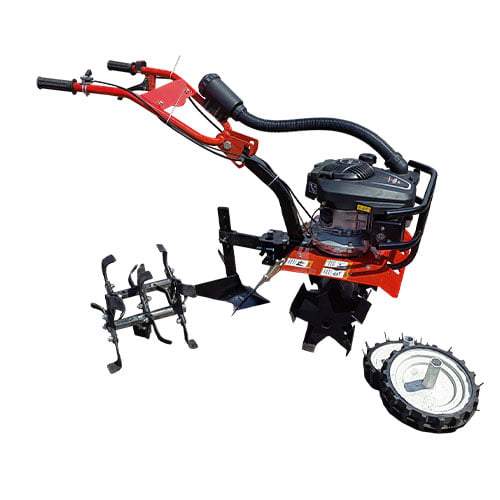
Walk-behind tractors share several common features that contribute to their effectiveness:
- Engine: The engine, typically a single-cylinder or two-cylinder gasoline or diesel engine, provides the power to drive the machine.
- Transmission: The transmission transfers power from the engine to the wheels, allowing for variable speeds and gear selection.
- Handles: The handles provide control over the tractor’s direction and speed.
- Tines or Rotary Blades: Tines or rotary blades are attached to the rear of the tractor for tilling, cultivating, and other soil preparation tasks.
- Attachments: A variety of attachments can be mounted to the tractor, expanding its capabilities to include tasks such as planting, fertilizing, and transporting goods.
Table of Common Walk-Behind Tractor Sizes and Horsepower
| Size Class | Horsepower | Typical Applications |
|---|---|---|
| Small | 3-5 HP | Home gardens, small farms |
| Medium | 6-10 HP | Medium-sized farms, market gardens |
| Large | 11-16 HP | Larger farms, commercial operations |
Types of Walking Tractors
Walking tractors come in various types, each suited for different tasks and farm sizes. Understanding the types will help you select the one that best meets your needs.
Single-Purpose Walking Tractors
These are designed for specific tasks such as plowing, tilling, or mowing. They are ideal for farmers who need a machine for a particular job and do not require versatility.
Multi-Purpose Walking Tractors
Multi-purpose walk-behind tractors can accommodate a range of attachments, making them suitable for various tasks. These tractors are more versatile and can be used throughout the farming season for different activities.
Electric Walking Tractors
Electric walk-behind tractors are powered by batteries instead of gasoline or diesel engines. They are eco-friendly and quieter, making them ideal for farms located near residential areas.
Diesel/Gasoline Walking Tractors
These are the most common types of walking tractors, powered by internal combustion engines. They are known for their power and durability, suitable for heavy-duty tasks and larger farms.
Key Features to Consider
When choosing a walk-behind tractor, several key features should be considered to ensure it meets your farming requirements.
Engine Power
The power of the engine is a critical factor as it determines the tractor’s capability to perform various tasks. Engine power is measured in horsepower (HP), and higher HP generally means better performance for heavy-duty work.
Transmission Type
Walking tractors come with different types of transmissions, including manual and automatic. Manual transmissions provide more control, while automatic transmissions are easier to operate.
Weight and Size
The weight and size of the tractor affect its maneuverability and ease of use. Heavier tractors provide better traction but can be more challenging to handle. Lighter tractors are easier to maneuver but may not perform as well on tough terrains.
Attachment Compatibility
Consider the types of attachments available and their compatibility with the tractor. Multi-purpose tractors with a wide range of compatible attachments offer greater flexibility.
Durability and Build Quality
The build quality of the tractor is crucial for its longevity. Look for tractors made with high-quality materials that can withstand harsh farming conditions.
Ease of Maintenance
Regular maintenance is essential for the tractor’s performance and longevity. Choose a model that is easy to maintain and has readily available spare parts.
How to Choose the Right Walking Tractor
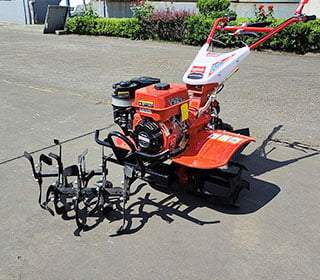
Choosing the right walk-behind tractor involves assessing your specific needs and matching them with the features and capabilities of available models. Here are some steps to guide you through the process:
Assess Your Farm’s Needs
- Farm Size: The size of your farm will determine the power and type of walking tractor you need. Larger farms may require more powerful tractors with a wider range of attachments.
- Soil Type: Different soil types require different types of tractors. For example, heavy clay soils may need more powerful tractors with robust plows.
- Tasks: List the tasks you need the tractor to perform, such as plowing, tilling, mowing, or planting. This will help you determine the necessary attachments and features.
Research and Compare Models
- Brands and Models: Research various brands and models of walking tractors. Look for reviews and ratings from other farmers to get an idea of their performance and reliability.
- Specifications: Compare the specifications of different models, including engine power, transmission type, and attachment compatibility.
- Price: Consider your budget and compare the prices of different models. Remember that investing in a high-quality tractor can save you money in the long run by reducing maintenance costs and improving productivity.
Test Before You Buy
- Demo: If possible, test the walking tractor before making a purchase. This will give you a feel for its handling and performance.
- Dealer Support: Choose a reputable dealer who offers good customer support and after-sales service. This will ensure you have assistance if you encounter any issues with the tractor.
Make an Informed Decision
- Warranty: Check the warranty offered by the manufacturer. A good warranty can provide peace of mind and protect your investment.
- Financing Options: Look into financing options if needed. Some dealers offer payment plans that can make purchasing a high-quality tractor more affordable.
- Future Needs: Consider your future needs and whether the tractor can be upgraded or expanded with additional attachments.
Conclusion
Choosing the right walk-behind tractor for your farm is a crucial decision that can significantly impact your productivity and efficiency. By understanding the different types of walking tractors, key features to consider, and how to match them to your specific needs, you can make an informed decision that will benefit your farming operations for years to come. Remember to assess your farm’s requirements, research and compare models, and test the tractor before buying to ensure it meets your expectations.
FAQ
What is a walking tractor?
A walking tractor is a two-wheeled agricultural machine powered by a small engine, designed to be operated while walking behind it. It is used for various farming tasks such as plowing, tilling, planting, and harvesting.
What are the benefits of using a walking tractor?
Walking tractors are versatile, affordable, and suitable for small to medium-sized farms. They can perform a wide range of tasks with the appropriate attachments, improving efficiency and productivity.
How do I choose the right walking tractor for my farm?
Consider your farm’s size, soil type, and the tasks you need the tractor to perform. Research and compare different models, test the tractor if possible, and choose a reputable dealer with good customer support.
What are the common attachments for walking tractors?
Common attachments include plows, tillers, seeders, mowers, and harvesters. These attachments allow the tractor to perform various agricultural tasks.
Are electric walking tractors better than diesel or gasoline models?
Electric walking tractors are eco-friendly and quieter, making them ideal for farms near residential areas. However, diesel and gasoline models are more powerful and suitable for heavy-duty tasks.
How often should I maintain my walking tractor?
Regular maintenance is crucial for optimal performance. Follow the manufacturer’s maintenance schedule, which typically includes checking the engine oil, air filter, and tires, and performing routine inspections and servicing.
Can walking tractors be used on all types of terrain?
Walking tractors are versatile and can be used on various terrains. However, the specific model and its features will determine its suitability for different soil types and conditions.
What is the average lifespan of a walking tractor?
The lifespan of a walking tractor depends on its build quality, maintenance, and usage. High-quality tractors with regular maintenance can last for many years, providing reliable service.
How much does a walking tractor cost?
The cost of a walking tractor varies depending on its features, brand, and attachments. Prices can range from a few hundred to several thousand dollars. Consider your budget and the long-term benefits when making a purchase.
Where can I buy a walking tractor?
Walking tractors can be purchased from agricultural equipment dealers, online marketplaces, and directly from manufacturers. Choose a reputable source that offers good customer support and after-sales service.

